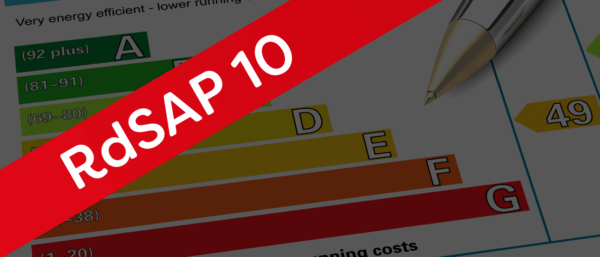RdSAP 10 Coming In June: Here’s 10 Changes To Know Before Launch.

Government is currently working on an RdSAP update (RdSAP 10), which they aim to be available for use by 15th June 2025. The RdSAP 10 update aims to deliver more accurate energy efficiency calculations and to help homeowners identify effective improvements.
In this 10-minute read, we’ll take you through the 10 changes to know before the big launch.
1. Sheltered Walls
Domestic Energy Assessors (DEAs) must select if a sheltered wall in a flat or maisonette is adjacent to a stairwell or an unheated corridor, as these now have different U-vales to reflect their differing thermal characteristics.
2. Window Measurements
All windows must now be measured individually and their orientation recorded, replacing previous assumptions based on property age and type. This change ensures the heat loss wall area is more accurate, leading to a better assessment of the benefits of insulation and glazing measures.
3. Roof Room Assessments
In order to better calculate the heat losses of roof rooms, additional measurements of gable and/or common walls are required. This also ensures a better estimation of the benefits from roof room insulation.
4. Additional Age Band
A new age band has been introduced for properties built from 2023 onwards, reflecting changes in Building Regulations. This new age band will be used for some data inferences, such as thermal bridging assumptions.
5. Additional Insulation Thickness
RdSAP 10 includes additional thicknesses for wall, roof and floor insulation, allowing the assessor to more accurately record what is present in the survey. RdSAP 10 also allows the assessor to select a specific thermal conductivity for the insulation, if this is known.
6. New PV Batteries and Diverters
RdSAP 10 includes PV batteries and PV diverters. This allows the calculation to more accurately assess how much of the generated electricity is used in the dwelling.
7. Mechanical Ventilation and Air Tightness
RdSAP 10 allows the inclusion of specific whole house mechanical ventilation systems from the product database. In previous versions of RdSAP only default, low efficiency systems could be recorded. An air tightness test result can now be used which will better reflect newer dwellings and those that have had a deep retrofit.
8. Carbon Emissions Factors
The carbon emissions factors have been updated, in particular for electricity. The carbon emissions for electricity have gone from 0.5kg per kWh down to 0.13kg per kWh. This reflects the decarbonisation of the grid and will impact electrically heated properties as well as those with micro-generation.
9. Updated Recommendations
The recommendations have been revised to include new RdSAP data items such as PV batteries and PV diverters. Heat pumps are now included in the EPC recommendations.
10. Heat Network Distribution Loss Factors
The distribution loss factor (DLF) accounts for losses between the heat generator and the dwelling. RdSAP 10 introduces a range of factors dependent on the age of the property rather than a fixed value. Newer properties will have a higher loss factor.
We hope this article has given you a quick-fire insight into the changes to RdSAP methodology coming on 15th June. Sava will continue to release further supporting information for customers and useful articles as the launch approaches.